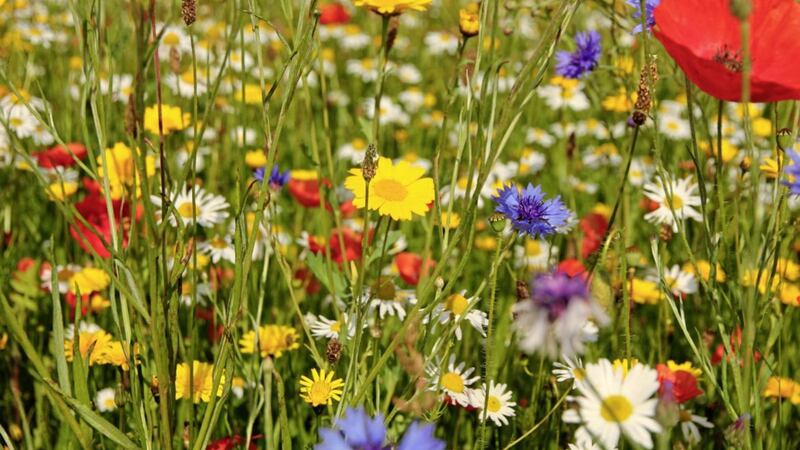IT’S a common misapprehension that creating and maintaining a wildflower meadow is an easy option. Perhaps logic suggests that it should be straightforward – after all, many of these so-called wildflowers could be regarded as weeds in a different context.
However, unless you’re happy to have a ‘meadow’ that is made up of dockens, thistles and ragwort, then a bit of effort is required. When it comes to gauging the amount of labour, arguably a wildlife meadow is no more or no less demanding than a conventional hard-wearing lawn, it’s just a different approach – but an approach that delivers a feature that is more attractive and produces a much better habitat for wildlife.
Wildflower meadows were once a common sight across Ireland, sustaining not only livestock but an extensive range of native flora and fauna. Living among the oxeye daisies, cranesbills and cowslips you’d find everything from red admiral butterflies and cockchafers through to corncrakes and Irish hares. However, the accelerated adoption of intensive farming methods in the postwar decades has all but eradicated these species-rich habitats.
Nowadays though, creating something that is in tune with nature rather than working against it is becoming increasingly fashionable, as not only does it make sound environmental sense, but because eco-gardening tends to be cheaper than its chemical-dependent counterpart.
If you plan to move from the monoculture of a lawn to a biodiverse meadow then autumn is a good time to put your plan into action, as it gives the plants a good head start on their spring sown counterparts.
What you ideally want is a piece of ground that has lost all its fertility, as this means the grasses that would otherwise swamp your young wildflower seedlings are less likely to flourish. Lawns that have been regularly fertilised with nitrogen-rich feed will probably need at least a couple of years before they return to a natural organic state that can support a greater diversity of flora.
However, it’s important to remember that grasses – or at least the right kinds of grasses – are just as important as the flowers for wildlife and for the look of your meadow. A ratio of around two parts grass to one part wildflowers is more than adequate.
My method is to cut the grass with the mower on a low setting and ensure the cuttings are lifted and taken away. The bare ground can then be raked and lightly dug over, removing the likes of dockens, brambles and large stones as you go along. Leave it for a couple of weeks until the annual weeds germinate before going over it with a hoe.
You can collect your own seeds from the wild or from somebody with an existing meadow, which is significantly cheaper, and perhaps add some brighter flowers like nigella and cosmos. Otherwise buy a prepared mix and sow it sparingly.
You want a mix of annuals, biennials and perennials, with the latter two often bought as plug plants raised by a wildflower nursery.
Among the best for wildlife and aesthetics are corncockle (Agrostemma githago), an annual which thrives in poor soil and flowers through most of the summer. Oxeye daisies (Leucanthemum vulgare) are great for populating an immature meadow, while the biennial wild carrot (Daucus carota) provides texture rather than colour.
It’s hard to go wrong with field poppies (Papaver rhoeas) which will seed in abundance, alongside the perennial field scabious (Knautia arvensis) and cornflower (Centaurea cyanus), a quintessential meadow flower that stays in bloom for months.








